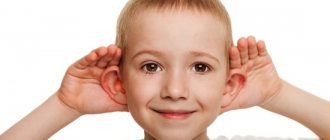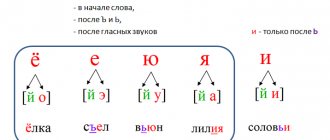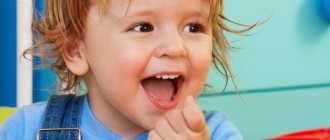What are fine motor skills
Fine motor skills are the consistency and precision of movements required to perform various actions with small objects using the hands and fingers and toes.
Fine motor skills are evident in children from an early age, when they are just learning to hold a toy. First, the development of the hand and finger movements occurs, then the formation of speech is formed. The formation of speech through the development of fine motor skills occurs due to the influence of nerve endings on the parts of the brain responsible for motor skills and speech, which are located next to each other.
In addition to the main function - speech development - fine motor skills influence the development of mental processes: thinking, memory, imagination, and the ability to navigate in space.
Features of the development of fine motor skills
The ability to master fine motor skills in children does not develop on its own, that is, it does not have a hereditary factor. Adults play a great role in this matter; by their example, they involve the child in various activities and develop him systematically and purposefully. This hypothesis was first put forward by the Russian scientist Ivan Mikhailovich Sechenov. Subsequently, other scientists, doctors, teachers and specialists in various fields began to focus on this opinion as the key one.
Why is so much attention paid to the development of fine motor skills? For children, it means the development of basic skills and abilities.
- The child’s speech is formed, which contributes to a comfortable stay in the children’s group.
- The skills of various movements are developed. The child can play with toys independently without distracting an adult.
- Self-service skills are strengthened. The child gains the ability to independently hold a spoon, tie shoelaces, fasten buttons and other elements on clothes.
- Social connections are established with peers and adults, thanks to the ability to clearly express one’s thoughts and maintain dialogue.
- Readiness for schooling is formed through the combination of all the above reasons.
Impact on child development
Motor skills and their development influence overall development. A child who has problems with it may experience certain difficulties in the following areas:
- Social: interaction, relationships with other people also depend on motor skills. If a child lags behind his peers, he begins to avoid communication and is not active.
- Physical: Bones, muscles and the nervous system can only develop normally if you get enough exercise.
- Cognitive: learning ability and productivity are much higher when a child moves a lot, his motor skills develop well.
- Emotional, psychological: children whose motor skills are well developed are emotionally more stable than children with motor deficits. They have a better self-image and are less anxious.
- Language: If speech movements cannot be performed properly, a person cannot learn to speak correctly. In addition, children who move a lot concentrate better and are also more receptive.
Games and exercises aimed at developing fine motor skills
The main activity of preschool children is play. We have selected a variety of games and exercises for you, among which you will definitely find something that suits you and your child.
- Folding toys. We place a transparent container in front of the child and place small toys separately. We suggest putting toys into the container with your right hand. Then we pour them back and ask you to repeat the same actions with your left hand.
- Games with cereals. In one container we mix two types of cereals, for example, rice and buckwheat. It is necessary for the child to put these cereals into different containers. You can complicate the game by adding other small objects to the mixture of cereals, for example, beads, buttons, pebbles.
- Exercise for tearing a sheet of paper. First, draw random lines on a sheet of paper. We invite the child to tear the paper with his hands exactly along the drawn lines. You can complicate the task by depicting geometric shapes.
- Page turning exercise. As your child gets older, instead of tearing a sheet of paper, you can suggest flipping through the pages of a favorite book. This exercise also promotes the child's early interest in reading literature.
- Smoothing out a crumpled sheet of paper. We place a crumpled sheet of paper in front of the child and offer to smooth it out so that not a single bent corner remains. You can complicate the exercise by suggesting that you do it with one hand, while holding the sheet with your thumb.
- Games with cubes. We give the task to assemble various figures from cubes: a tower, a house, a car, etc. Pyramid rings are also suitable for these games. The tasks become more complicated as the child masters the construction of simple figures.
- Games with lacing. Available in various options. It can also be an unnecessary shoe that you can let your child lace and unlace. It could also be a card with holes for laces. In any case, the actions with these objects are the same and pursue the same goal - to teach the child to cope with shoelaces on his own, since this skill will be useful to him in the future.
- Exercises with counting sticks. Please place geometric shapes on the table. First, the child completes tasks according to the model, and then independently according to verbal instructions. An additional advantage of this exercise is the formation of elementary mathematical concepts.
- Games with lids. Here you can offer various containers and vessels with lids that the child will independently twist and unscrew. And if you tell your child that you can’t cope without him, you will give him a motive to become your main assistant.
- Finger drawing in the sand. Invite your child to draw geometric shapes or any other design he wishes with all his fingers one by one. Interaction with sand also has a positive effect on the central nervous system.
Assistance
If parents suspect that their child is falling behind their peers, they should consult a specialist. The doctor will prescribe a diagnosis and study the features of the formation of the central nervous system according to the patient’s individual chart. If necessary, corrective measures will be taken.
If you have impaired finger motor skills, please contact the Trust Center for Psychology and Neurology in Krasnogorsk. To diagnose manual praxis disorder, cerebral MRI, visometry, X-ray of the hands, and EEG are performed. Consultation with a neurologist, ophthalmologist, and other specialized specialists is also necessary.
For correction we use a developmental environment, hand massage, exercise therapy, speech therapy massage, articulation gymnastics, as well as sujok therapy. The clinic has created a space that goes beyond the usual format of medical centers. We support patients, trying not only to improve their health, but also to provide all possible support in difficult situations.
Activities to develop fine motor skills in children
In addition to games to develop fine motor skills, you should engage in a variety of activities that children will undoubtedly enjoy:
- modeling from plasticine, clay or dough;
- drawing or coloring with paints, pencils, crayons;
- construction from construction kits, paper, cubes;
- crafts made from paper, natural or waste materials;
- stringing beads and buttons on a string;
- putting together a mosaic;
- ball games;
- peeling fruits, such as tangerines;
- working with special manuals.
Toys for developing fine motor skills
What could be better for a child than a new toy? Only a toy that contributes to his all-round development.
- Massage relief mats for feet. Ideal to use after waking up to tone the body. You can purchase a puzzle mat that he can assemble and disassemble on his own. If you want to focus on developing cognitive skills, you can purchase a mat with numbers or letters.
- Magnets. Place the magnets on the refrigerator or a special magnetic board. The child will definitely become interested in them and will independently move them across the surface. Depending on the purpose pursued, you can purchase magnets of various shapes, for example, in the form of numbers.
- Kinetic sand. Tactilely pleasant not only for children, but also for adults. This sand does not stain your hands, so it will become a favorite toy for children and an assistant for adults.
- Easel for drawing. There are options for easels on which you can draw on both sides: on one side with special crayons, and on the other with paints.
- Massage balls. Ideal for finger play. Thanks to the spikes, they actively affect the areas of the palms and fingers.
- Designers. You can choose a set from any manufacturer. You should focus on safety for the child, appropriateness for age and gender. In addition to the development of fine motor skills, it stimulates the development of modeling and design skills.
- Finger Theater. Combines the possibilities for the comprehensive development of the child. In addition, it improves the expressiveness of speech, memory, imagination, and acting skills. This option should definitely be used if you notice that one hand is more developed than the other.
- Busyboard. Recently, a popular aid for the development of fine motor skills. It is a wooden structure onto which various objects are attached on both sides. These can be lacing, caps, locks, switches, gears, etc. This toy will help parents, as the baby can play with it independently and safely.
General speech underdevelopment is a systemic speech disorder in which all its components suffer. Along with severe impairment of sound pronunciation, prosodic components of speech, extremely limited vocabulary, gross speech agrammatisms, impairment of the syllabic structure of words and the sound filling of words, underdevelopment of non-speech mental functions is also noted. With general underdevelopment of speech, a cerebrasthenic syndrome is observed, manifested in increased neuropsychic exhaustion, inattention, and restlessness. The immaturity of the emotional-volitional sphere in children is combined with low mental performance, emotional lability, and sometimes motor disinhibition. Some of them, on the contrary, are characterized by inhibition and uncertainty of movements. There are disturbances in both general and fine motor skills (changes in muscle tone, impaired coordination of movement) . In addition, articulatory motor skills suffer, the innervation of speech muscles is impaired: the muscles of the lips, tongue, palate, as well as facial, respiratory and vocal muscles.
There is a violation of the intonational expressiveness of speech, the processes of perception and reproduction of the intonational structure of a sentence. In this case, the safest way is to imitate interrogative and narrative intonation, but independent reproduction is difficult. In the motor sphere, purposeful actions, imitation of complex movements, and the performance of a series of actions, that is, complex praxis, suffer.
The specificity of the symptoms of general speech underdevelopment is the reason that prompted me to theoretical consideration and practical work on this particular topic.
Children with general speech underdevelopment need complex correctional interventions. This involves, first of all, psychocorrection, including games and exercises for the development of attention, memory, automated and expressive motor skills, and the expression of various emotional states. Using various types of exercises and games in practical activities, including speech and movement, we thereby influence the psychomotor state of a child with severe speech impairment, which fully serves the objectives of correctional pedagogy.
When approaching a child with speech pathology, it is always necessary to remember that no matter how severe speech disorders are, they can never be stationary, completely irreversible: speech development continues with the most severe forms of its underdevelopment. This is due to the continuing maturation of the child’s nervous system after birth and the greater compensatory capabilities of the child’s brain. One of the most important tasks of speech therapy is the “management” of speech and mental development, the possible “leveling” of this development. To develop methods of directed training, a systematic dynamic approach to the analysis of speech disorders, to predicting the further speech and mental development of the child, and to develop a method of complex influence on children is necessary.
Children with general speech underdevelopment exhibit a variety of neurological symptoms. It is combined with unstable symptoms of pyramidal insufficiency (changes in tone, underdevelopment of motor skills, children are motorically awkward). Weakness of the right hand is often detected and many children use their left hand when eating, playing, and drawing. Violations of optical-spatial praxis are common: children do not orient themselves in the body diagram, cannot or find it difficult to organize movement or a series of movements in space.
Children with reduced cortical activity, prone to inhibitory processes, show timidity and lethargy in play activities, their movements are constrained, and they quickly get tired.
Children with increased excitability lack concentration, attention and persistence in completing the game.
It is known that the higher the level of development of sensations and perceptions in children, the richer the opportunities for mastering cognitive activity, the broader the knowledge of the surrounding reality. The enrichment of the sensory sphere with new forms of influence, providing rich material for a variety of experiences, allows us to talk about the expansion of cognitive boundaries, cognitive activity, and the development of thinking in general.
Research by famous psychologists L. S. Vygotsky, A. N. Leontyev, P. Ya. Galperin, D. B. Elkonin shows: for the full development of thought processes, it is necessary for the child to assimilate a certain social experience, the content of which must be purposefully developed with the help of an adult. By forming and organizing this experience from the outside, the teacher thereby creates a basis that contributes to the further successful implementation of various types of activities. Productive activity, in addition to activating mental processes, develops sensory skills, orientation processes, and elements of active imitation. But under one condition - if the action is accompanied by the demonstration of an adult. At the same time, the perception of the educational impact is enhanced and an active process of communication with an adult occurs.
Motor exercises with speech accompaniment help develop the ability to listen to speech and receive motor or sound responses from the child. At the same time, these exercises form in children imitation of the movements they most often use in life and in everyday life. A speech therapist or teacher, pronouncing the text of game exercises, establishes a certain speech rhythm, involving the child in active speech imitation and compliance with this rhythm. Games effectively contribute to the development of oral speech and correct diction. Emotional participation in all games of the adult is necessary. A smiling and friendly teacher is a model of behavior. An unobtrusive, personality-oriented approach provides the psychological comfort and support necessary for every child.
When selecting poems, rhymes, texts, it is necessary to take into account how accessible and close they are to children in content and compliance with their speech capabilities and skills. It should be remembered that movements should not be mechanical. To conduct classes, you need to specifically select material:
- Poems are selected so that it is possible to correlate the movements of the arms, legs, and torso with the rhythm of speech;
- The length of the poetic line should be average, otherwise it will be difficult to select the appropriate movement;
- The predominance of verbal vocabulary in the poem, to make it easier to accompany the text with movements;
- The poem must have a plot line or character to avoid mechanical movements.
Not all speech exercises can be performed while simultaneously performing an action and reciting a verse. This may cause breathing difficulties. Therefore, sometimes it is advisable to divide students into two groups: one performs the movements, the other pronounces the text.
Children are very fascinated by movements accompanied by words. They develop children's voluntary attention, resourcefulness, and the ability to act in a coordinated manner. It is difficult to overestimate the role of such games and exercises in the emotional and physical development of children.
Currently, no one doubts that speech therapy work with children lagging behind in speech development should begin at an early age. Correctional training covers a wide range of speech development: it begins with the first words and ends with expanded phrasal speech, when the child can freely express his thoughts. All practical material is given with gradual complication. The connection between children’s speech activity and all aspects of their mental development should be the focus of the speech therapist’s attention.
What do we mean when we talk about “speech with movement”?
I believe that the concept includes a number of components:
- Physical exercises that are widely used in various classes.
- Dramatizations and games.
- Counting books.
- Exercises for fingers (“Tell poetry with your hands”).
It should be noted the peculiarities of using this material in correctional work with children suffering from severe speech disorders, in particular general speech underdevelopment.
Physical exercise , as an element of physical activity, is included in the middle of the lesson and in mass kindergartens. Such a break in the lesson allows them to relieve muscle tension and static load associated with sitting, switching their unstable attention to other activities.
The importance of physical education minutes increases even more when working with preschoolers with speech pathology.
In my many years of practical work, I am repeatedly convinced that children suffering from general speech underdevelopment are, as a rule, distractible, tired, and quickly exhausted. During intense speech therapy sessions, such children especially need motor relaxation. A physical pause, switching children to another type of activity, allows them to activate their mental performance. At the same time, the speech therapist receives an additional opportunity to use the active speech of children.
In this case, it is necessary to link the texts directly to the topic of the speech therapy lesson. This approach allows you to more fully realize the goal of a speech therapy lesson, use educational time more economically, and replenish children’s vocabulary.
It can be assumed that poetic texts also make it possible to normalize the tempo of children’s speech, to achieve greater smoothness and rhythm, which has a positive effect on the formation of the syllabic structure and sound filling of the word, and ultimately on improving the phonetic aspect of speech. The content of physical education changes almost every lesson.
The speech material of physical education minutes must meet certain requirements. Let's take a closer look at them:
- The speech material must contain the sound studied in class or the corresponding lexical topic or grammatical category.
- Children's movements should, if possible, correspond to the called actions.
- The physical education pause includes as diverse a variety of actions as possible so that children can, for example, sit down, turn around, raise their arms up, jump, in other words, you need to strive to cause maximum motor activity in them.
- Poems must be accessible in content.
- Texts should be short so that children can easily perceive them and reproduce them without difficulty.
Let's dwell on how physical education minutes are held. They do not have to be carried out strictly in the middle of the lesson. A break of 1-3 minutes should be taken when the speech therapist feels the first signs of fatigue in children (motor restlessness, distractibility, decreased interest in the activity).
A special place for physical education is not required. The children stand next to the table at which they were sitting. The speech therapist must ensure that there is sufficient distance between the children and that they do not touch each other.
The speech therapist recites a new poem and shows the corresponding movements. In this case, children silently, following the speech therapist or together with him, only perform movements, listening and memorizing the text. Children participate in the second recitation, simultaneously performing movements (actions). The assimilation of words occurs quickly, as they are prompted by movements. The speech therapist, pronouncing the text, strives to emphasize the rhythmic pattern of the phrase by repeating the corresponding movements. There is no need to strive to memorize poems, as this takes a lot of time, and this stage of training does not serve the purpose.
At the end of each physical education session, the speech therapist must ask the children questions about its content, taking into account the main goal of the entire speech therapy session. For example, “Name the affectionate words from this poem” (meaning nouns with suffixes of diminutive meaning). Or “Name words with the sound k(x) from this poem.”
During physical education, children have the opportunity to repeat verbs with various prefixes (drove, drove around, arrived), learn the spatial meaning of the prepositions on, under, in. You can choose physical education lessons for coordinating numerals with nouns. Moreover, the content of a physical education lesson can correspond to a given lexical topic or serve as poetic material for automating and differentiating the given sounds.
To coordinate movement and speech in speech therapy practice, dramatization games that develop dialogic speech and dramatization games are often used. Children's ability to transform is used to correct speech. The opportunity for transformation is provided in various games, which can be carried out throughout the entire course of speech therapy classes, depending on the complexity and volume of speech material.
In the middle group, children are just learning to combine movement and words. This combination is not easy, so various exercises are introduced: it is proposed to tell the story in the first person, accompanying the words with corresponding actions. For example, imagine yourself as someone and talk about it: “I am a little bunny jumping and jumping (jumping), I have long ears and a short tail (showing). I like to chew carrots (imitation of movements). I'm afraid of everyone. Oh, scary!! (wraps his arms around himself and trembles).”
Creating an image requires the child to actively think, creatively imagine, inventiveness, and encourages him to look for and find new means of expression. Children do not simply copy an image, but, as it were, combine their ideas, convey their attitude towards what is depicted, their thoughts and feelings. There is a search for means of expression: intonation, facial expressions, gesture.
Experience has shown that the uncertainty and constraint of children's manifestations, in particular in children with speech pathology, are smoothed out as children acquire the necessary skills and abilities: to speak clearly, regulate the strength and pitch of the voice, change the topic of speech, walk, run, jump correctly . Children learn to model with their voice, to speak loudly, quietly, rudely, to convey surprise, joy, sadness, and fear with intonation.
Practice has shown that combining speech and movement, speech and gestures in play is difficult for preschoolers with speech pathology, and their coordination of actions is disrupted. The level of children's abilities cannot be the same, which is why individual work with each child is so important when preparing him for performing activities.
To automate the sounds in speech, the speech therapist uses special games and exercises with poetic texts. The poetic form helps children more easily overcome the difficulties of pronouncing sound-syllable combinations. In particular, counting rhymes are widely used, in which each rhythmic accent is accompanied by a movement of the hand. The child does not just repeat words with the studied, automated sound - he needs to think about the meaning of the word, compare the sound of word elements, comprehend the principle of word formation and inflection, and finally, emotionally evaluate and perceive the speech material. Many rhymes that do not cause difficulties for children with normal speech development turn out to be difficult for children with general speech underdevelopment. It is difficult for them to pronounce a combination of sounds and syllables at the required pace and rhythm; it is even more difficult for them to combine reading a counting rhyme out loud with alternately pointing at the children standing in a circle. After memorizing the rhyme, children independently mark the stressed syllable with a hand movement (work on the syllable structure). At the same time, the movement of the child’s hand occurs precisely on each word of the counting rhyme, including the selection of prepositions and conjunctions.
Thus, children learn to isolate a word in a sentence, which undoubtedly prevents dysgraphic errors typical for children with SLD (omission of prepositions, gross agrammatisms). Counting books can also be used to strengthen counting skills.
And finally, one of the components of the concept of “speech with movement” is the connection between finger movements and speech, playing with fingers. When mastering oral speech, articulatory organs are involved - the tongue, lips, teeth, vocal cords, lungs, and when mastering written speech, the eyes, hand, and fingers of the writing hand are also involved. Fingers are not only an organ of written speech, but also influence the development of oral speech.
The movement of the fingers, historically during the development of mankind, turned out to be precisely related to speech function. All scientists who have studied the activity of the children's brain and the psyche of children note the great stimulating effect of hand function. Neuropathologist and psychiatrist V. M. Bekhterev wrote that hand movements have always been closely related to speech and contributed to its development. The English psychologist D. Selley also attached great importance to the creative work of hands for the development of children's thinking and speech. The progression of a child’s speech development is such that first subtle movements of the fingers develop, then articulation of syllables appears. All subsequent improvement of speech reactions is directly dependent on the degree of training of finger movements. Following the development of subtle differentiating movements of the fingers, the pronunciation of the first syllables begins. As fine movements of the fingers are improved, speech functions develop.
Data from electrophysiological studies suggest that the speech areas of the brain are formed under the influence of impulses coming from the fingers, since the speech area in the brain is located next to the motor area. About 1/3 of the area of the motor area is occupied by the projection of the hand, located very close to the speech motor area. Consequently, training fine movements of the fingers has a great influence on the development of a child’s active speech. It has been experimentally proven that if the development of finger movements corresponds to age (normal), then the development of speech is also within normal limits; If the development of the fingers lags behind, the development of speech lags behind. Therefore, when preparing a child for active speech, you need to keep in mind not only the training of the articulatory apparatus, but also the movements of the fingers. Work on training your fingers can begin as early as 6-7 months. The techniques can be very different (stroking the hand, bending and straightening the fingers), it is important that more fingers are involved in the movement and that these movements are quite energetic.
The following techniques are also simple: rolling plasticine balls, tearing paper into small pieces, sorting beads, folding pyramids, unfastening and fastening buttons, tying and untying bows, knots, lacing, stringing beads, buttons on wire, folding mosaic patterns, etc. d. Folk finger games, such as “Magpie-White-sided”, “Ladushki”, “Fingers in the Forest” and others, provide very good training for finger movements. Currently, a large number of books for children with finger games are being published; the formation of fine motor skills can be carried out in the process of performing various types of activities (modelling, designing, appliqué, drawing). The development of manual motor skills is of great importance for mastering graphic skills.
Systematic work on training and improving children's motor skills of the fingers is a powerful means of increasing the performance of the cerebral cortex, while children's memory and attention improve. Exercises with fingers promote smoothness and expressiveness of speech and activate speech development in general. Training the movements of the fingers in itself is the most important factor stimulating the child’s speech development, helping to improve articulatory motor skills, preparing the hand for writing and, no less important, a powerful tool that increases the performance of the cerebral cortex. This conclusion, based on numerous experimental data, is of exceptional interest from a pedagogical point of view. In the system of correctional and educational work with children with speech impairments, it is necessary to pay more attention to the formation of fine movements of the fingers.
As speech material for such games, not only nursery rhymes and rhymes are used, which, as a rule, have a strict certain rhythm, but also stories and fairy tales, accompanied by an imitation of the corresponding actions of the characters of a particular work.
From all of the above, we can conclude that motor exercises associated with speech, whether physical education or dramatization games, help children develop rhythm, dynamism, and expressiveness of movements. Clear, rhythmic texts help improve children's movements, diction, articulation, and pronunciation of individual sounds. Games with words are also valuable because they can be used both in individual and subgroup work with children. These games help to accomplish many of the tasks of correctional education.
When starting correctional pedagogical work with four-year-old children, I was faced not only with an extremely low level of speech development, but also with pronounced disorders of neuropsychic activity in children with general speech underdevelopment. General underdevelopment of speech in children was combined with a number of neurological and psychopathological syndromes. This manifested itself in the form of increased neuropsychic exhaustion, emotional instability, and disturbances in the functions of attention and memory.
Many of the children in my group had general motor clumsiness. They had difficulty switching from one type of movement to another. Automated performance of certain motor tasks and reproduction of even simple rhythms turned out to be impossible. In some children, the manifestation of hyperexcitability predominated, in others - lethargy, lethargy, and passivity.
The children had an extremely reduced level of cognitive activity, due to both the speech defect itself and low mental performance. As a rule, the children were lethargic, lacked initiative in classes, and showed little interest in them.
Most children had severe impairments in voluntary facial motor skills (the quality and volume of movements of the muscles of the forehead, eyes, cheeks), speech motor skills (strength, accuracy, range of switching movements of the lips, tongue, cheeks), impairments in static and dynamic coordination, as well as fine differentiated movements of the fingers.
In the children's speech there were disturbances in all groups of sounds: whistling, hissing, sonorants. Moreover, many children’s speech lacked sounds that appear at an early age in normally developing children in ontogenesis: n, v, f, k, g and others. Some children had virtually no connected speech as such. For example, the lines of A. Barto’s famous poem about a bull fit into the short phrase “Det atet atai diaya ataadu.”
At the beginning of the year, the kids in the middle group had a hard time getting used to the new environment and the objects around them. The goal of the first lessons was to create a play situation that stimulated the activity of children, encouraging them to get closer to each other, with the adults around them (speech therapist, teachers, etc.). It was important to teach children to master various means of expressing their emotional state during the learning process. Faced with pronounced disorders of neuropsychic activity in children with general speech underdevelopment, I first of all began psycho-gymnastics aimed at developing the cognitive, emotional and personal sphere of children. In correctional classes, I used various games and exercises, based on the practical material of the “Child’s Personality Development Program” (L. M. Shipitsina, O. V. Zashirinskaya, A. P. Voronova, T. A. Nilova “Fundamentals of Communication 9 ABC of Communication” ) St. Petersburg 1996).
At the same time, I tried to activate the children’s speech, to evoke speech imitation in close connection with their practical activities, with play, with a visual situation. When choosing various games for classes, I used the most simplified poetic texts, in which the sounds present in children’s active speech prevailed. Initially, I paid special attention to the development of spoken speech using onomatopoeia with the presentation of a picture depicting the desired sample (for example: wolf ooo-oo, trumpet toot-too-too, drum boo-boo-boo).
In addition to the indirect development of articulatory motor skills, I also used special movements to develop the muscles of the face, lips, tongue, and lower jaw. For example: using facial expressions to show a cheerful and sad person, a person experiencing pain, anger, fear, joy. As they were completed, exercises on onomatopoeic exclamations were included (Ah! Oh! Ah! Uh! Wow!). the intonation of an exclamatory sentence was worked out; work on the use of exclamatory intonation was carried out on the material of interjections using pictures and poems. I read a poem, and the children pronounced only interjections and onomatopoeia with an exclamatory intonation. As preparatory exercises for the formation of intonation expressiveness in expressive speech, exercises were used to develop the height and strength of the voice, to gradually expand the range of the voice, develop its flexibility and modulation.
All articulation exercises were performed under counting, with my speech accompaniment. The singing of vowels was accompanied by hand movements. Spread your arms to the sides and sing the sound “A”, connect your fingers in the shape of a hoop and sing the sound “O”, connect your fingers in a ring - the sound “U”.
I noticed that children are very attracted to my expressive movements and emotional modulation of my voice when demonstrating certain exercises. The children were very eager to imitate, although completing tasks was not always easy for them.
Educating and developing the pace and rhythm of breathing, I used relaxing exercises that helped relieve psycho-emotional tension, trained muscle activity, developed a sense of rhythm, and helped free breathing movements and vocal reactions from general muscle activity. At first, the children performed the movements without speaking. For example: walking in a circle with the movement of the hands on a signal, accompanied by inhalation and exhalation, then the voice and breathing control are added: a-a-ah (with different intonations: fear, surprise, delight, anger), rhythmic speech was used, enumeration, counting . The development of breathing was based on speech, singing and movement.
I paid a lot of attention to the development of pantomime. Using tasks like “find out who it is by movement,” I asked children to show the characteristic movements of an animal or imitate the actions of people (ball games, snowball fights, ice skating, picking berries in the forest). At first, I showed the movements I was mastering slowly, in parts, and helped the children. Then the children mastered the movements independently, by imitation. Initially, the movements consisted of a small number of elements, then their number gradually increased.
Gradually, the children learned to correctly recognize the action shown in the picture. I conducted these classes in a playful way. The picture was presented to one of the children, he depicted the action, and the other children guessed. Then everyone repeated this movement.
Systematic work on the development of coordination of speech and movement, the development of fine motor skills in the children of the group, using the above exercises, methods and techniques for two years, gave me the opportunity to trace the dynamics of the speech and general development of children.
Gross and fine motor movements have become faster, more accurate and coordinated. The dynamic organization of the motor act has improved, and it has become possible to quickly and smoothly reproduce movements following the example of a speech therapist and from memory. Optical-spatial orientation has improved. Along with this, it became possible to more quickly develop sensory, intellectual and affective-volitional spheres in children. There is sufficient stability of attention and memory - semantic, logical and verbal, and the productivity of memorization has increased.
Speech development in children - the sound pronunciation aspect of speech has improved, the level of development of phonemic hearing has significantly increased. The lexical vocabulary and the possibility of its activation in impressive and expressive speech have become much richer. The number of agrammatisms decreased, and the children’s speech became more coherent, developed, and emotionally charged.
At what age should you start developing fine motor skills?
You can develop and train the motor skills of your fingers from infancy, starting from 6-7 months of age through stroking the child’s palm, bending and straightening the fingers.
It is important to pay attention to hand motor skills for at least a few minutes every day.
- For children from nine months of age, large objects should be selected, for example, beads or pyramid rings.
- At the age of 1 year, you can organize games with natural materials: sand, clay, cones, pebbles, etc.
- After 2 years, the baby will happily perform finger gymnastics together with an adult. Saying various nursery rhymes simultaneously with hand movements will help teach hand and tongue coordination. And it will also be better remembered by the child himself.
- After 3 years, you should resort to exercises with paper. Usually by these years the child has mastered the skill of working with scissors, so it becomes possible to model appliqués.
- And from the age of 4-6 years, the skill of origami is mastered as one of the most difficult types of games with paper.
No matter what age you are developing fine motor skills in children, it is necessary to organize this activity so that it brings not only benefit to the child, but also pleasure.
Reasons for violations
Insufficiency of fine motor skills of the hands develops with dysfunction of the nervous, visual and/or musculoskeletal systems. Manual praxis disorder develops against the background of:
- perinatal pathology (damage to the central nervous system, epilepsy, cerebral palsy);
- prematurity with deviations in neurological status;
- neuroinfections (encephalitis, meningitis, cerebellitis).
Among the causes also include injuries to the head and upper extremities. Predisposing factors are hereditary diseases - genetic disorders.
conclusions
In the age of technological progress and children’s early adoption of phones, tablets and computers, other aspects of child development are regressing. And, first of all, speech suffers. The relationship between fine motor skills and speech, as well as the development of mental processes, has already been established.
Systematic work on the development of fine motor skills is necessary throughout the preschool period, since by the age of seven the areas of the brain responsible for its development have already been formed. A child going to school should be prepared for new loads, in particular to master writing skills, and not learn to hold a pen or pencil correctly. Lack of development of basic skills can lead to unstable self-esteem, inability to build social connections, and poor academic performance.
The children's network will be happy to help develop your child's fine motor skills. A developing subject-spatial environment, highly qualified specialists who love their work with all their hearts, and cozy groups will not leave anyone indifferent.
General developmental classes or specialized programs - the choice is yours. Contact us if your goal is to raise a developed, open, free, inquisitive person.









